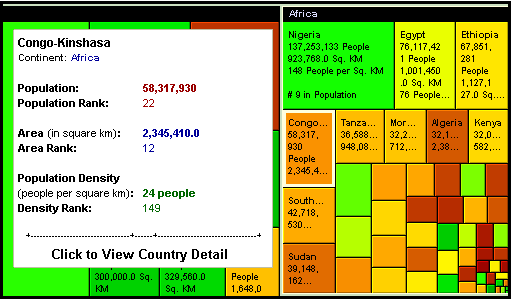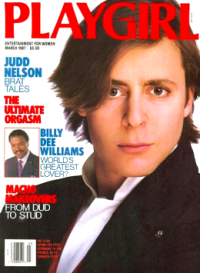User-Generated Content Event Offers Super Speaker
There's a User-Generated Content Expo being held in San Jose, Calif., next month. Keynote speakers include Craigslist founder Craig Newmark and CafePress founder Fred Durham.
While browsing the list of speakers to see if they invited any actual content-generating users, I found one of the greatest speaker bios I've ever read. Meet Dawn Clark, founder of DawnClark.Net:
A pioneer in the field of Cyberenergetics, Dawn Clark is a sensitive who stands at the nexus of science and spirituality. Fields influenced by Cyberenergetics include game theory, psychology, biological systems, organizational structure, philosophy, systems theory, and architecture. Dawn's deep insights in energy dynamics at the sub-atomic level are relevant for developing strategic direction and alignment, understanding how products engage, engross and affect subtle fields, all the while factoring in the values of the individuals or audiences critical to making a solution path workable.
Where most people see empty space, Dawn perceives wave form, frequency, and interaction. She sees depth in dimensions and from an early age began experiencing retro and pre-cognitions. A near death experience heightened her sensory abilities. Recognizing her natural gifts, a former elite American counter intelligence agent, whom she assisted in writing books, trained her in the art of spycraft and developed her skills in remote viewing, subtle energy perception and engagement. Rather than apply her skills in the government arena, Dawn chose instead to walk the path of creating solutions, services and learning programs to help people and organizations realize their potential.
Internationally published, Dawn has guided clients working with Fox Entertainment, ABC, PBS, Wall Street Journal Online, 2010 Olympics, and many others, including creative artists, entrepreneurs and researchers. By bringing to light that which is for most unseen, Dawn consults on business development, identifies deep drives of engagement, offers insight as a future historian and tools for empowerment that go beyond what traditional counsel has to offer. A faculty member at the Omega Institute, Dawn is also a member of the Association of Humanistic Psychology, the International Society for the Study of Subtle Energies and Energy Medicine, and the Foundation for Mind Being Research.
I have a theory that every person on earth has one superpower, but it's often such a trivial ability that it goes completely unnoticed. My superpower is the ability to enter any mall department store and know exactly which direction to go when seeking the mall entrance. My power, though occasionally of moderate utility, does not lend itself to a catchy superhero name.
If I could see energy at the sub-atomic level, I'd use that power for a hell of a lot more than helping big media companies reach their potential.
The Sarah Connor's Great-Grandparents Chronicles
David Friedman asks a good question:
Why does Skynet keep sending Terminators after Sarah Connor? Or even John Connor, for that matter? Why not go back a hundred years, or two hundred years, and kill her great grandparents? ...
Future John Connor would surely send a human into the past to stop the Terminator from killing his great great grandparents. So how does this person fight against a robot killer in an age when technology is so primitive, using his knowledge from the future? And how does the Terminator blend in? What materials does he use to repair himself when he's been damaged? Over time, as he gets more and more damaged, does he go from glistening machine to steampunk hodgepodge of parts?
I think there’s a lot of potential for period Terminator stories. Maybe there's an 18th Century Ireland Terminator trying to kill Johnny O'Connor before he comes to America. Or a Dark Ages Terminator who’s trying to kill Sarah the bar wench.
Peace Declared Between Myself and Sweden
As it turns out, Sweden did not intentionally declare war on my web server earlier this month. Programmer Daniel Stenberg explains how the international incident happened:
A few years ago I wrote up silly little perl script (let's call it script.pl) that would fetch a page from a site that returns a "random URL off the internet." I needed a range of URLs for a test program of mine and just making up a thousand or so URLs is tricky. Thus I wrote this script that I would run and allow to get a range of URLs on each invoke and then run it again later and append to the log file. It wasn't a fancy script, but it solved my task.
The script was part of a project I got funded to work on, that was improving libcurl back in 2005/2006 so I thought adding and committing the script to CVS felt only natural and served a good purpose. To allow others to repeat what I did.
His script ended up on a publicly accessible web site that was misconfigured to execute the Perl script instead of displaying the code. So each time a web crawler requested the script, it ran again, making 2.6 million requests on URouLette in two days before it was shut down.
Sternberg's the lead developer of CURL and libcurl, open source software for downloading web documents that I've used for years in my own programming. I think it's cool to have helped the project in a serendipitous, though admittedly server destroying, way.
To make it easier for programmers to scarf up URouLette links without international strife, I've added an RSS feed that contains 1,000 random links, generated once every 10 minutes. There are some character encoding issues with the feed, which I need to address the next time I revise the code that builds URouLette's database.
This does not change how I feel about Bjorn Borg.
Using Treemaps to Visualize Complex Information
I spent some time today digging into treemaps, a way to represent information visually as a series of nested rectangles whose colors are determined by an additional measurement. If that explanation sounds hopelessly obtuse, take a look at a world population treemap created using Honeycomb, enterprise treemapping software developed by the Hive Group:

This section of the treemap shows the countries of Africa. The size of each rectangle shows its population relative to the other countries. The color indicates population density, ranging from dark green (most dense) to yellow (average) to dark orange (least dense). Hovering over a rectangle displays more information about it,.
A treemap can be adjusted to make the size and color represent different things, such as geographic area instead of population. You also can zoom in to a section of the map, focusing on a specific continent instead of the entire world. The Honeycomb treemapping software offers additional customization, which comes in handy on a Digg treemap that displays the most popular links on the site organized by section.
By tweaking the Digg treemap, you can see the hottest stories based on the number of Diggs, number of Diggs per minute and number of comments. You also can filter out results by number of Diggs, number of Diggs per minute or the age of the links.
I don't know how hard it is to feed a treemap with data, but it seems like an idea that would be useful across many different types of information. As a web publisher, I'd like to see a treemap that compares the web traffic and RSS readership my sites receive with the ad revenue they generate. The Hive Group also offers sample applications that apply treemaps to the NewsIsFree news aggregator, Amazon.Com products, and iTunes singles. This was not a good day to be a Jonas Brother.
Sweden Declares War on My Web Server
Since 4 a.m. Friday, a computer at a Swedish IT company made more than 1.5 million web requests to my web site URouLette, which links to random web pages stored in a MySQL database. They're coming in at a speed of 38 requests a second. My MySQL database server can't handle that many requests, so by Friday afternoon Workbench and a bunch of other sites slowed to a crawl as the web server began belching black smoke. A massive crash was imminent.
The last time somebody did this, I used the Linux utility iptables to reject all connections from the offending IP address, which solved the problem easy peasy lemon squeezy. This time around, iptables failed with a "Can't open dependencies file" error.
My new friend in Sweden appears to be building a database of web addresses by requesting a URouLette script that loads a random web page over and over. This is both obnoxious and dumb -- all links on URouLette come from the Open Directory Project and can be downloaded in one file. I've reduced the severity of the problem by sending the same link with every request -- the company's home page.
Flooding a web server with this many requests constitutes a denial of service attack. In the time I've composed this blog entry, another 100,000 requests have been made. Ironically, an employee of the company blogged recently that it was suffering its own attack, though on a much larger scale:
Tens of thousands of machines on the internet suddenly started trying to access a single host within the network. The IP they targeted has in fact never been publicly used as long as we've owned it (which is just a bit under two years) and it has never had any public services.
We have no clue whatsoever why someone would do this against us. We don’t have any particular services that anyone would gain anything by killing. We're just very puzzled.
Our "ISP", the guys we buy bandwidth and related services from, said they used up about 1 gigabit/sec worth of bandwidth and with our "mere" 10megabit/sec connection it was of course impossible to offer any services while this was going on.
This is a good time to mention that I never liked Bjorn Borg.
Fixing Page Not Found Errors on FeedBurner MyBrand Domains
Google has begun integrating FeedBurner, the service for publishing, tracking and promoting RSS feeds, into the rest of the Don't Be Evil Empire. As part of the move, FeedBurner users who are employing the MyBrand feature must make a change to the name service for their domain names.
MyBrand makes it possible to host your feeds on FeedBurner without losing any subscribers if you decide later to quit the service. I'm using it to host four feeds, including SportsFilter's RSS feed, on my own domains.
MyBrand domains used to point to feeds.feedburner.com, but they must be changed to a new subdomain of feedproxy.ghs.google.com. Each FeedBurner user is assigned a different subdomain. For SportsFilter, I updated it by revising one line in the BIND zone file for sportsfilter.com:
feeds IN CNAME subdomain.feedproxy.ghs.google.com.
The subdomain portion is based on your Google account.
This is supposed to be all that's required to make the move. Unfortunately, a giant honking bug in FeedBurner broke three of my four MyBrand domains this morning. Users received a 404 "Page Not Found" error when they tried to access my feeds. I found a workaround on Google's FeedBurner help site that explains how to fix the problem:
- Log in to FeedBurner with your Google account.
- Open the MyBrand page.
- Remove the broken domain name and click Save.
- Add the domain name back again and click Save.
Who Belongs in the Brat Pack?
 I don't spend enough time tackling the big questions on Workbench, so I'd like to rectify that today by addressing a subject of great import among those of us who came of age in the '80s: Are James Spader and Robert Downey Jr. part of the Brat Pack?
I don't spend enough time tackling the big questions on Workbench, so I'd like to rectify that today by addressing a subject of great import among those of us who came of age in the '80s: Are James Spader and Robert Downey Jr. part of the Brat Pack?
The term Brat Pack was coined by journalist David Blum in the June 10, 1985, issue of New York magazine. His cover story Hollywood's Brat Pack describes a world, now lost, in which attractive young women fought for the right to engage in consequence-free heterosexual coitus with Judd Nelson.
If Rob Lowe seemed to be inviting all too much attention from the girls, Judd Nelson acted as though he wanted nothing to do with it. His fame, too, helped attract them -- they recognized his tough-guy looks from his role as the wrong-way kid in The Breakfast Club and sought his attention. But as Alice sat down in an empty chair next to him, Judd Nelson announced to anyone within earshot, including Alice, "There is a line. When someone crosses the line, I get angry. And when someone sits down at the table, they have crossed the line. You can let them get close" -- he looked around at Alice and the swarm of girls -- "but you can't let them sit down." ...
Everyone in Hollywood differs over who belongs to the Brat Pack. That is because they are basing their decision on such trivial matters as whose movie is the biggest hit, whose star is rising and whose is falling, whose face is on the cover of Rolling Stone and whose isn't. And occasionally, some poor, misguided fool bases his judgment on whose talent is the greatest.
Only a fool would attempt to judge Brat Pack members on the basis of acting talent. The editors of the Pack's Wikipedia entry have spent a great deal of time defining eligibility for membership:
Appearance in one, or both, of the ensemble casts of John Hughes' The Breakfast Club and Joel Schumacher's St. Elmo's Fire is often cited as a prerequisite for being a core Brat Pack member.[10][11][12] With this criterion, the most commonly cited members include Emilio Estevez, Anthony Michael Hall, Rob Lowe, Andrew McCarthy, Demi Moore, Judd Nelson, Molly Ringwald and Ally Sheedy.[5][6][13][14][15][16] Conspicuously absent from most lists is Mare Winningham, the only principal member of either cast who never starred in any other films with any other cast mates.
When there are nine citations in just three sentences, you know that a major bloodbath has taken place behind the scenes at Wikipedia. The victorious editors, clambering over the corpses of their opponents with their cold, dead hands still clutching keyboards, have taken a conservative position on membership that relegates Spader and Downey to "close contributor" status. Jamie Currie, the web's preeminent Brat Pack scholar, also uses Wikipedia's eight members and consigns Downey and John Cusack to "Possibly Pack" status.
This is a crime against the '80s. I recently caught the tail end of Less Than Zero, a 1987 film I've seen in random order over the years while channel surfing and reassembled in my brain. That movie has everything we've come to associate with the great works of the Brat Pack: a lily white cast, self-absorbed young protagonists who yearn for more interesting personal problems, big haired women in shoulder pads and absolutely no awards for acting.
I take the liberal view of Brat Pack membership. If you've starred in at least two films with a lead actor from Breakfast Club or St. Elmo's Fire and you were younger than 30 at the time -- the Harry Dean Stanton exclusion -- you ran with the Pack.
James Spader starred with McCarthy and Ringwald in Pretty in Pink, McCarthy in Less Than Zero and Mannequin and Lowe in Bad Influence. Robert Downey Jr. starred with Hall in Weird Science and Johnny Be Good, Hall and Nelson in Hail Caesar and Ringwald in The Pick-Up Artist. He also starred with Spader in Tuff Turf and Less Than Zero, which counts once we've admitted Spader into the group.
The decision to admit these actors has far-reaching consequences that become clear when you spend too much time on IMDB's People Working Together search page.
The appearance of three or more Brat Pack members in a film grants it first-order status alongside Breakfast Club and St. Elmo's Fire, so Less Than Zero, Pretty in Pink and Hail Caesar also can bestow membership upon their stars.
Jami Gertz starred with Downey, McCarthy and Spader in Less Than Zero, Hall and Ringwald in Sixteen Candles and Spader in Endless Love. Count her in.
John Cusack starred with Gertz, Hall and Ringwald in Sixteen Candles, Lowe and McCarthy in Class, Spader in True Colors and Bob Roberts and Moore in One Crazy Summer. He's way, way in.
Gertz and Cusack bring Sixteen Candles and Class to first-order status.
Charlie Sheen starred with Cusack, Gertz, Hall and Ringwald in Sixteen Candles, Estevez and Nelson in Never on Tuesday, Estevez and Moore in Wisdom, Estevez in Young Guns and Men at Work, Cusack in Eight Men Out and Being Jon Malkovich and Spader in Wall Street. He's the mayor of in.
Because Sheen and Estevez are brothers who often work together, sometimes on films that no one outside their immediate family went to see, there's potential for chaos here. The first-order clause must be modified to exclude movies in which two of the three Brat Pack stars are siblings. (My apologies, John and Joan Cusack.)
So if you starred in at least two films with a lead actor from Breakfast Club, St. Elmo's Fire, Less Than Zero, Pretty in Pink, Hail Caesar, Sixteen Candles or Class, and you were younger than 30 at the time, and the film did not star two siblings with less than two otherwise eligible members, you belong to an imaginary group of middle-aged actors whose association will circumscribe your career until your dying day.
Oddly, I have yet to find a way to admit Kevin Bacon.
Coming soon on Workbench: Who's the better Darrin Stevens?
Judd Nelson forever!


